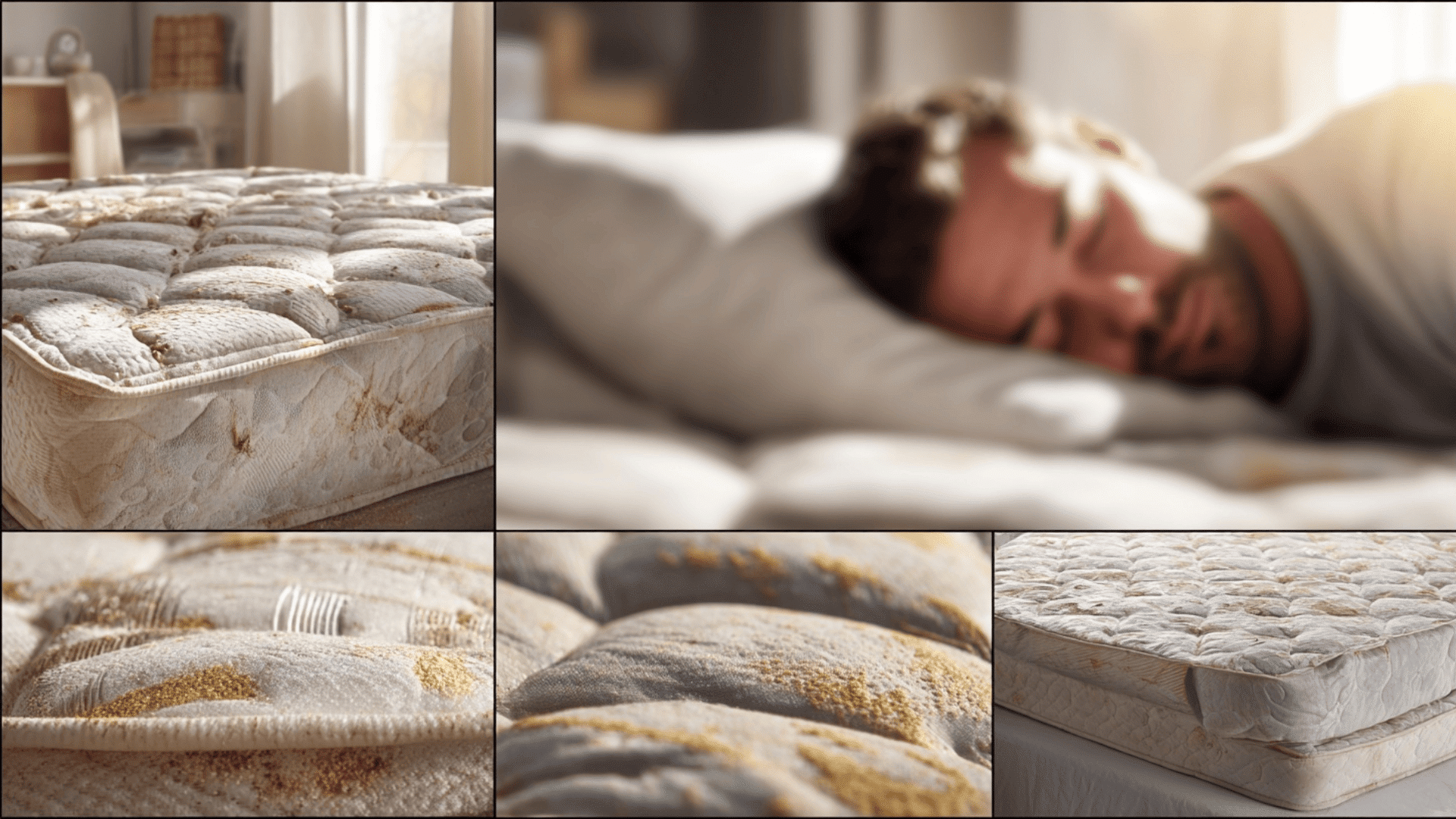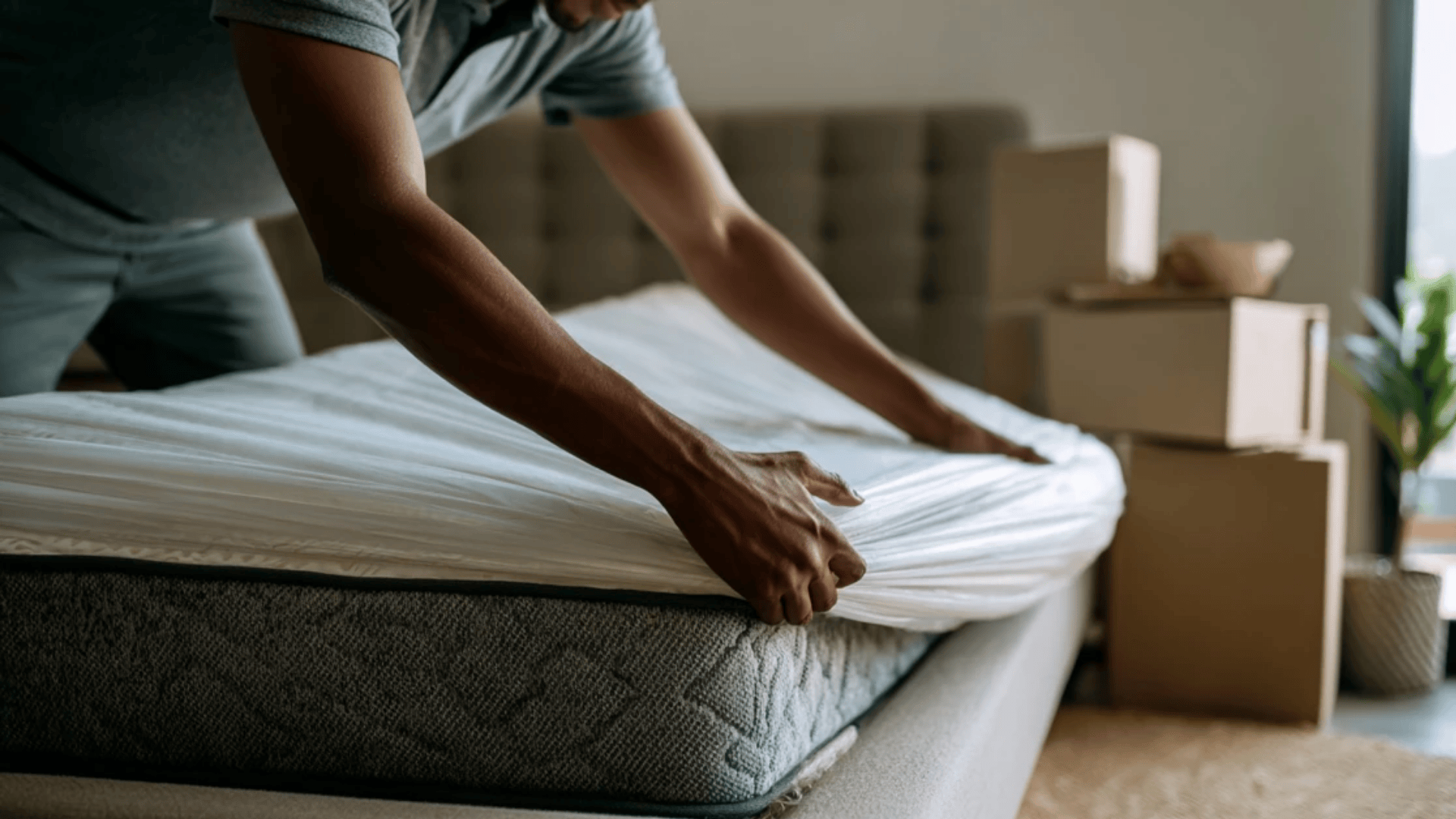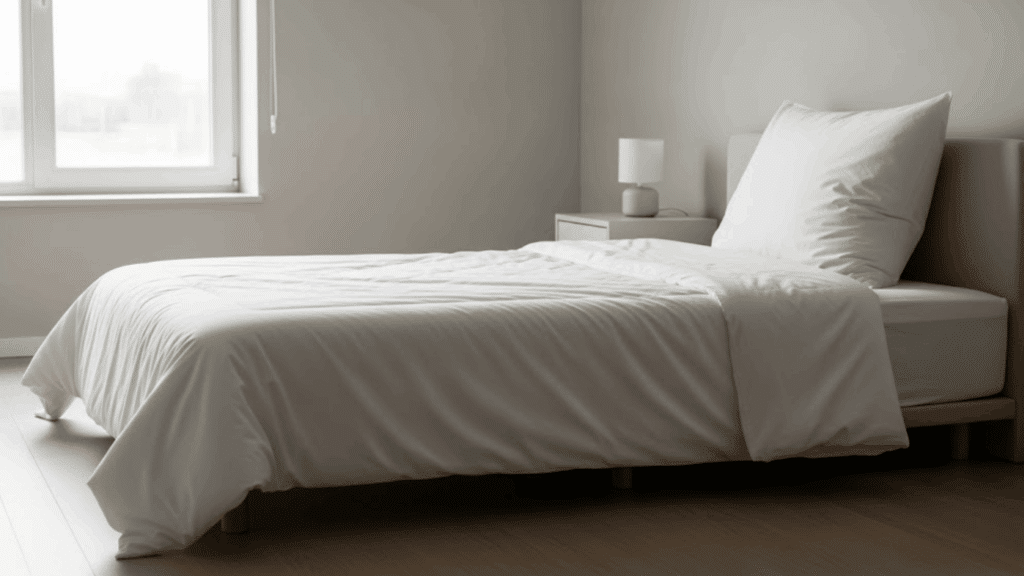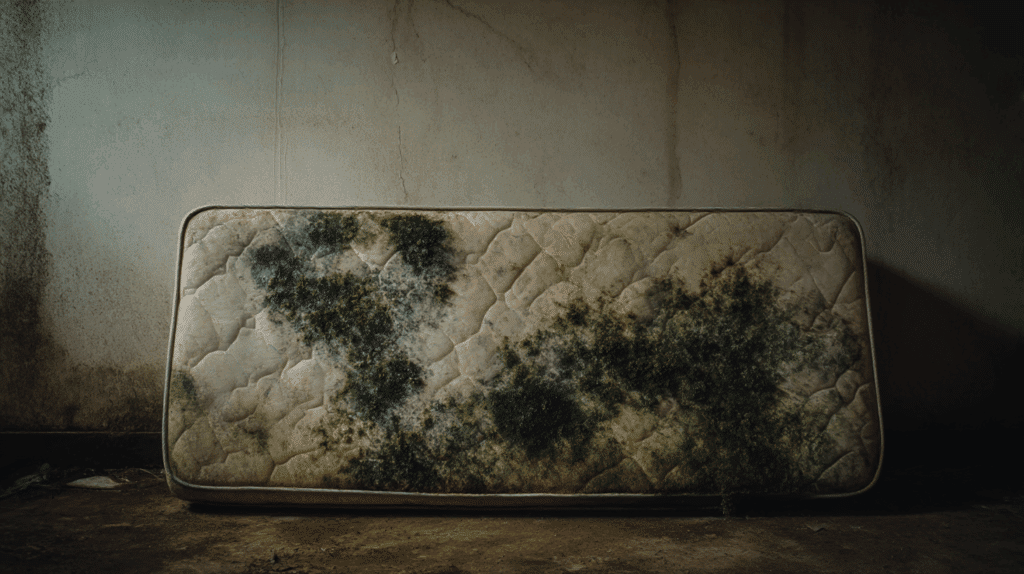When was the last time you thought about your mattress? If you’re like most people, the answer is probably not in years.
A mattress is one of those things we use every single day but rarely think about replacing, until it starts causing problems.
So, how often should you replace your mattress to maintain the comfort and support you need?
In this guide, we’ll talk about the ideal replacement timelines, signs that your bed might be past its prime, expert advice on how to replace it, and tips to make it last longer.
By the end, you’ll know exactly when it’s time to say goodbye to your old bed.
How Often Should You Change Your Mattress?
For most standard mattresses, the recommended replacement time is every 6–10 years.
This is a general guideline that works for many households, but the exact timing can vary depending on how often the mattress is used, the quality of its materials, and how well it’s cared for.
While some may last a bit longer with proper maintenance, signs like sagging, uneven surfaces, noisy springs, or a noticeable loss of comfort mean it’s time for a change.
Even if your mattress still looks fine, waking up sore or uncomfortable is a clear signal that it’s no longer giving you the support you need.
Factors Affecting How Often You Should Change Your Mattress

Mattresses don’t all age at the same pace. Some last over a decade, while others lose comfort in just a few years.
How long yours will last depends on multiple factors, from the materials inside it to how often it’s used and even the climate in your bedroom.
1. Types of Mattress
The type of mattress you own plays a major role in its lifespan. Some materials are built to last, while others break down faster.
| Mattress Type | Average Lifespan | Replace Sooner If… |
|---|---|---|
| Innerspring | 6–8 years | Sagging, noisy springs, uneven feel |
| Memory Foam | 7–10 years | Deep body dips, loss of firmness |
| Latex | 10–15+ years | Comfort layer wears out |
| Hybrid | 6–8 years | Reduced support, spring noise |
Knowing your mattress type gives you a realistic expectation of its durability and helps you plan for a timely replacement.
2. Environment
The conditions in your bedroom can directly impact your mattress’s longevity.
Humidity and moisture can cause mold and mildew to form inside, while very dry climates can make foam layers brittle and prone to cracking.
Maintaining a balanced environment keeps your mattress healthier and extends its lifespan.
3. Frequency of Use
How often you sleep on a mattress is one of the biggest factors in how quickly it wears out. A mattress used every night experiences constant pressure and material compression, causing it to lose shape faster.
Beds in guest rooms or holiday homes face much less wear and can last significantly longer. Light-use mattresses often outlast daily-use ones by several years simply because they face less strain.
4. Care & Maintenance
Proper care helps a mattress retain its comfort and support for longer. Here are simple habits that make a big difference:
- Use a mattress protector to guard against spills, sweat, and allergens.
- Rotate the mattress every few months to distribute wear evenly.
- Vacuum regularly to remove dust, dirt, and allergens.
- Air out the mattress occasionally to keep it fresh.
Consistent care like this can add years to your mattress’s life and delay the need for replacement.
5. Body Weight & Sleeping Style
Your weight and sleeping position influence how and where your mattress wears down. Heavier sleepers and side sleepers often see sagging in areas like the hips and shoulders, where pressure is greatest.
Lighter back sleepers generally experience more even wear across the surface. Choosing a mattress that resists wear in your most-used areas can make a big difference in how long it lasts.
6. Quality of Materials
The materials inside a mattress determine its durability. High-density foam, thick coils, and natural latex are more resilient and keep their shape for years.
Lower-quality materials, like thin coils or low-density foam, tend to lose firmness and structure much sooner.
Selecting a mattress made with better materials often means more years of comfort before needing a replacement.
Ways to Tell Your Mattress Is Old

You don’t always need to check the age tag to know it’s time for a new mattress. Here are some clear signs:
- Sagging or Dips: A dent where you sleep means the support has worn out.
- Worn or Torn Fabric: Frayed edges, rips, or exposed springs are big warning signs.
- Lumpy or Uneven Feel: The internal padding has shifted or broken down.
- Noisy Movement: Creaks or squeaks mean the inner structure is failing.
- Stains or Odor: Older mattresses often hold smells and bacteria.
- Better Sleep Somewhere Else: If another bed feels more comfortable, yours may be past its best.
When your mattress shows even one or two of these signs, it’s a clue that its best days are behind it. Replacing it sooner rather than later can mean better sleep and improved comfort.
Why Replacing Your Mattress Matters
Keeping a mattress for too long can reduce sleep quality, make it harder to fall asleep, and even cause or worsen back, neck, and shoulder pain.
Over time, it can also increase dust mite and allergen buildup, affecting both breathing and skin health, while impacting your mood, focus, and energy during the day.
Think of your mattress like a favorite pair of shoes; no matter how much you love them, they eventually lose their support.
How to Make Your Mattress Last Longer
If your mattress is still in good shape, you can help it last longer by following these tips:
- Use a Mattress Protector: Protects against spills, sweat, and dust mites.
- Rotate Every 3–6 Months: Keeps wear even across the surface.
- Vacuum and Air It Out: Helps reduce allergens and odors.
- Use a Supportive Bed Frame: Prevents sagging by supporting the mattress evenly.
- Avoid Sitting on the Edges: Reduces long-term structural damage.
Not ready to replace your mattress? Add a topper, place plywood for firmness, or deep clean. These are temporary comfort solutions, not permanent fixes.
Expert Opinions on Mattress Replacement

Replacing your mattress at the right time can improve sleep quality, reduce body pain, and boost overall comfort.
Experts recommend following a clear process to know when to replace it and how to choose your next one wisely.
Step 1: Follow the 7–10 Year Rule
Most mattresses lose support within 7–10 years, even if they look fine.
Materials naturally wear down with use, so replacing them within this window helps ensure you get consistent comfort, proper spinal support, and better long-term sleep health.
Step 2: Listen to Your Body
If you wake up with stiffness, aches, or feel unrested despite enough sleep, your mattress may not be supporting you properly.
Persistent discomfort is a clear sign it’s time to invest in a new, supportive mattress.
Step 3: Check Manufacturer Guidelines
Each mattress type has a recommended lifespan from the manufacturer.
Reviewing these guidelines can help you decide when to replace yours and may reveal care tips that extend its life, keeping it comfortable and supportive for longer.
Step 4: Test Your Sleep Elsewhere
If you consistently sleep better on a hotel bed, guest bed, or even your couch, your mattress is likely past its prime.
Comparing your sleep quality on different surfaces can reveal if it’s time for a replacement.
Step 5: Plan Your Replacement
Measure your space to ensure a good fit. Try mattresses in-store if possible. Choose one with a trial period for testing.
Arrange eco-friendly disposal or recycling of your old bed before the new one arrives.
Step 6: Understand Warranties & Trials
Warranties typically last 10–25 years, covering manufacturing defects but not normal wear. Many brands offer trial periods of 90–365 days.
Always use a protector and proper base to avoid voiding your warranty or shortening the mattress’s lifespan.
Final Takeaway
Replacing your mattress at the right time is essential for maintaining good sleep quality, proper support, and overall health.
While most mattresses last between 6–10 years, factors like material type, body weight, sleeping style, and care habits can shorten or extend that lifespan.
Watch for signs like sagging, discomfort, or better sleep elsewhere; these are clear indicators it’s time for a change.
Investing in a new mattress when needed can prevent aches, improve breathing by reducing allergens, and boost your mood and energy.
Since you spend nearly a third of your life in bed, choosing a supportive, high-quality mattress and replacing it on time is one of the smartest moves for your comfort and well-being.
Frequently Asked Questions
How Often Should You Change A Memory Foam Mattress?
Every 7–10 years, or sooner if it starts sagging or losing firmness.
Can A Mattress Last 20 Years?
A high-quality latex mattress might, but most beds lose comfort and hygiene long before that.
Is A Mattress Topper A Good Replacement?
A topper can make a bed more comfortable for a while, but it can’t replace lost support.
Do Expensive Mattresses Last Longer?
Yes, especially if they use high-quality materials and you care for them properly.





